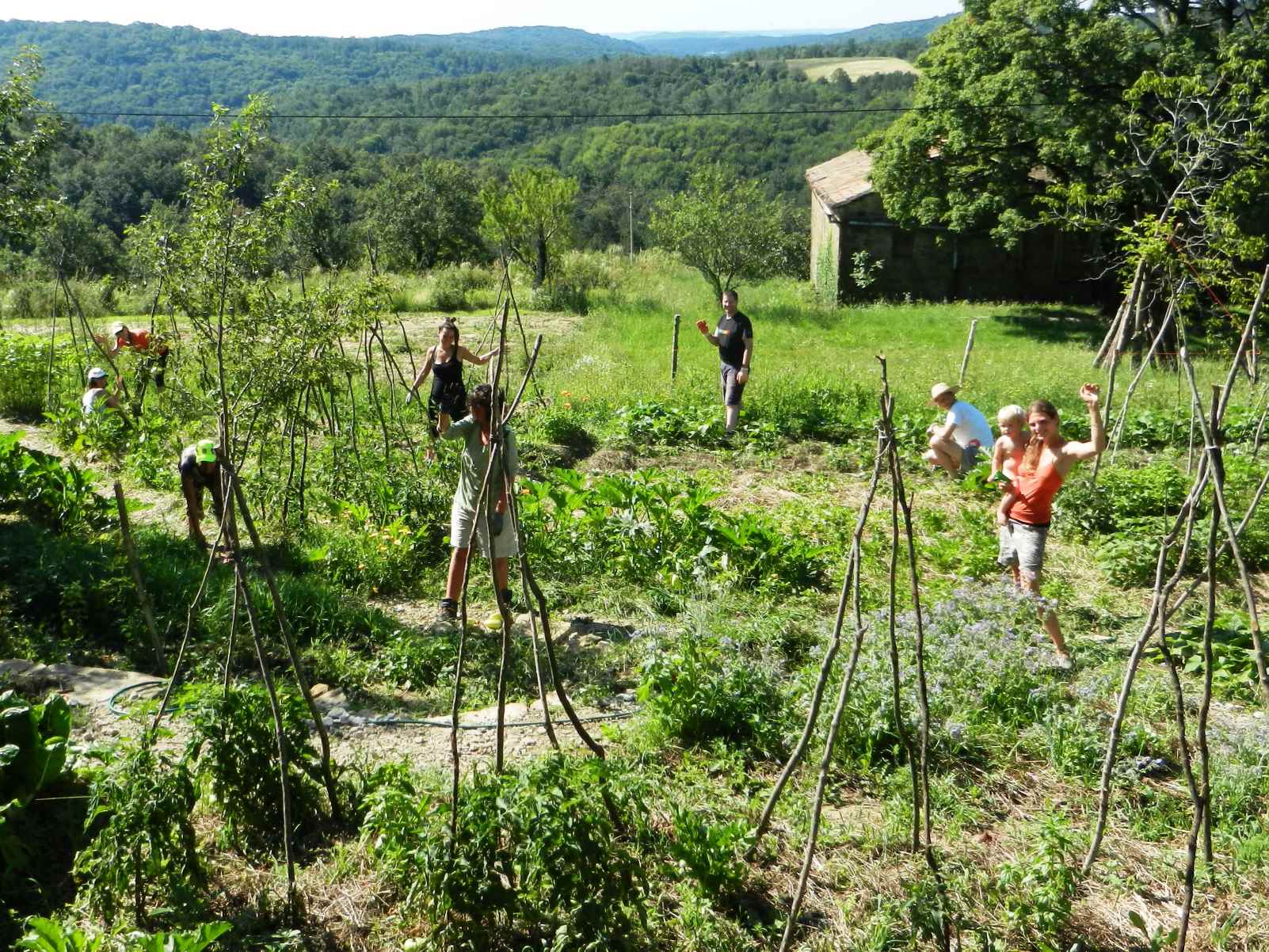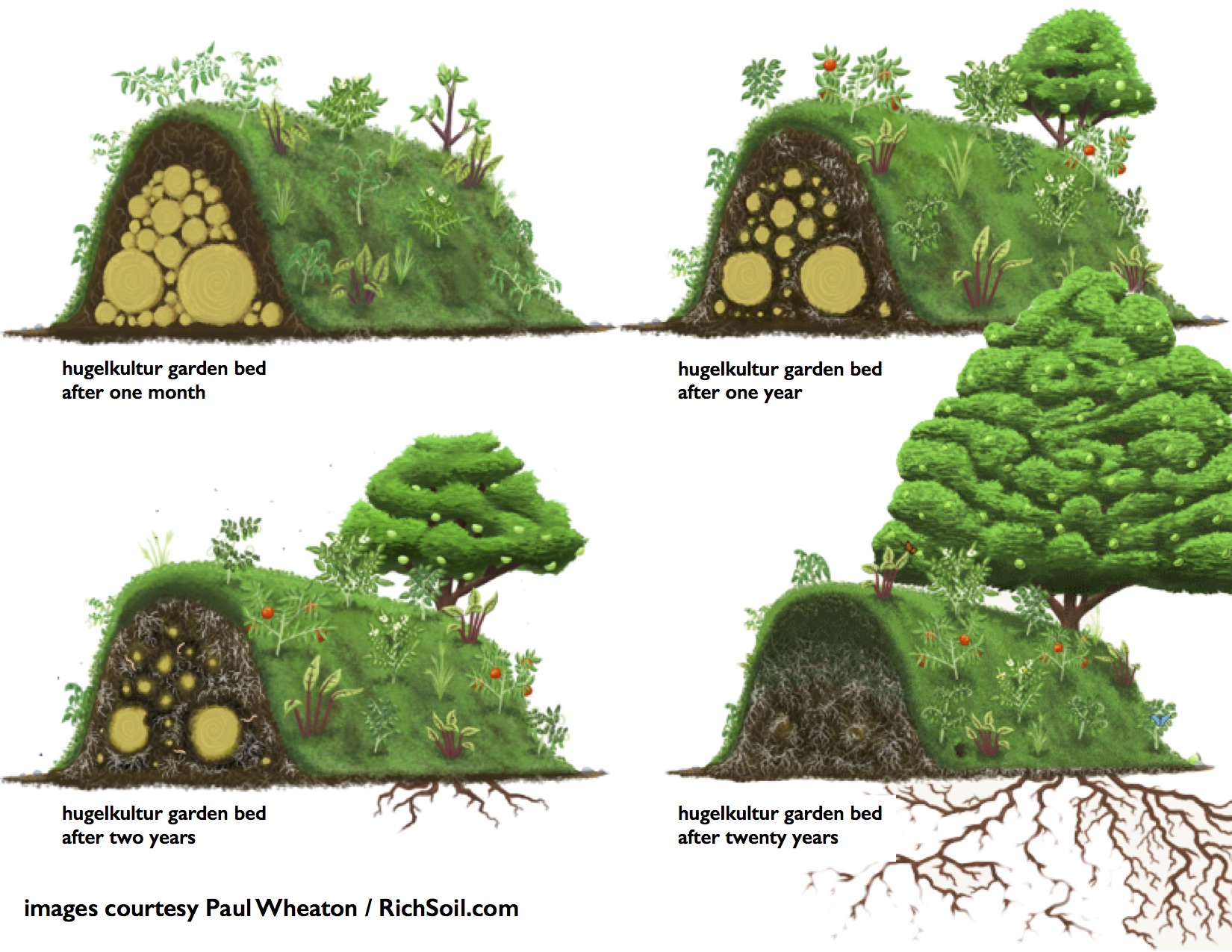Permaculture (‘permanent agriculture’) is a sustainability approach which is based on the functioning of natural ecosystems. First we have to observe the ecosystem in which we wish to act: particularly the climate, the soil, the diversity and the links between the components of the ecosystem. Then we plan our actions in a way that transforms the area as minimally as possible, trying not to stop the natural flows but instead encourage the successful interactions offered by nature.

Picture: Permaculture garden in Hrvoji.
Permaculture approach is mostly used in gardening but it is successful also in other areas: for example, we can build a house and even a village with a permaculture approach. The more globally we approach, the more we can limit the impact of human activities on the ecosystem. A permaculture area works as a closed circle where everything is useful and beneficial for another element: no waste, no pollution, only richness. Thanks to that, we can reverse the deterioration of the world, feed it instead of destroying it.
PERMACULTURE BUILDING
Permaculture building means that we try to adapt the house to its environment and modify its surroundings as little as possible. To do that we have to pay attention to the natural conditions of the area and use the materials which are naturally present there. For example, if the strongest winds come from the south, the house can be built on the north side of the hill and the slope can be used as a part of the wall.
Permaculture building also encourages interactions with the environment. In Park Istra we can see several examples of this:
– The water system works as a circle between outside and inside the house. We catch the rain water, clean it with three filters and use it for drinking, showering, cleaning dishes… Then we clean the used water again with reed beds and reuse the water again for watering our garden.
– We have a toilet system for collecting humanure which, after two years, can be used on the garden.
– The walls of the house and walls around the house have empty spaces where birds and insects nest.
There are other permaculture approaches in the building itself: in the house we used old roof tiles to pave the kitchen floor and make window shelves. We plastered walls with clay that creates optimal micro climate inside the house and regulates humidity.
To build a village with a permaculture approach means to build healthy links between the natural ecosystem and the human life. Furthermore, we plan the village so, that it also encourages healthy links between humans themselves.
PERMACULTURE GARDEN
With permaculture gardening we try to produce a big amount of healthy food using minimum space without destroying the resources of the planet. We achieve that by taking care for the soil and encouraging the complementarity between plants. By imitating natural ecosystems we create a garden which is almost autonomous and consequently doesn’t need a lot of work.
Some principles of permaculture gardening:
– observe the area (the climate, the soil, local plants and animals…) before creating the garden
– plan your garden on a long-term scale
– plant together complementary species (melliferous plants will help with plants’ breeding, some plants protect other plants from insects, snails or diseases…)
– use only what you have and all what you have (no waste)
Some permaculture elements that can be observed in Park Istra garden:
– composting of organic waste
– combinations of some plants as tomatoes and celery.
– ‘spiral bed’: because a spiral drains the rain from the top to the bottom, drought resistant plants will be planted on top and moisture loving plants on the bottom of the spiral. Sun loving plants will be planted on the south side and the plants that need more shade on the north side of the spiral.
– ‘raised beds’: one meter deep holes were dug, they were filled with wood and the soil was put back forming piles of soil. The wood will feed the soil for several years and will provide humidity. The raised bed will also improve soil drainage and help the plants on the top to catch the sunlight.
A scheme of a “raised bed”:

Written by Anna Vittet, EVS Volunteer from France